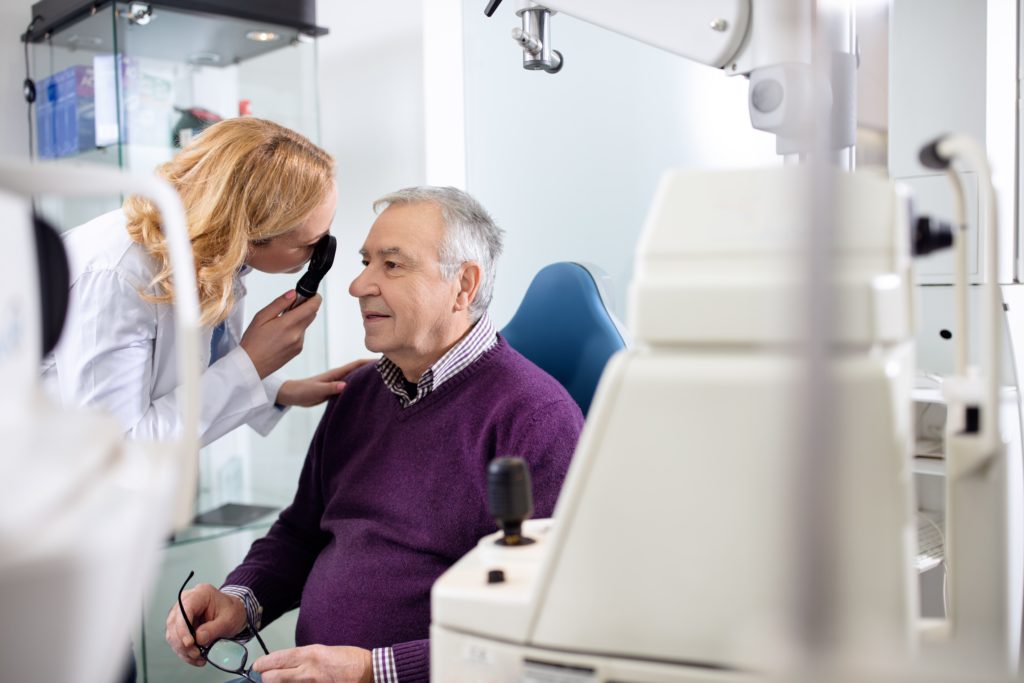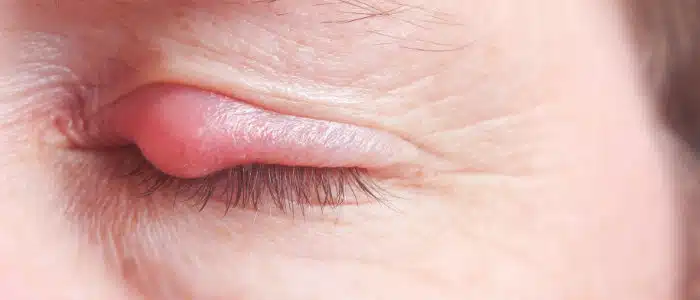
Researching the potential causes of eyelid pain and how to treat it is a good place to start, but if irritation, pain, discharge, inflammation, and spasms in one or more eyelids persist, it could be a sign of a serious condition. Whenever you have a change in your vision or eyes, consult your eye doctor to diagnose the condition.
Left untreated, minor pain in your upper eyelids or lower eyelids can quickly grow the center of your focus. It is our hope that by the time you’ve read this brief post, you’ve identified the culprit and the next steps to soothe your sore eyelids.
#1 Eyelid soreness may be caused by infection
A bacterial or viral infection can be dangerous to your eyes. Periorbital cellulitis is an infection surrounding the eye (preseptal cellulitis) or behind the eye (“orbital cellulitis”) and often involves the eyelid or muscles surrounding the eye.
Often, symptoms escalate quickly and this condition requires immediate medical attention. If left untreated, orbital cellulitis will damage the optic nerve and cause loss of vision, hearing loss or cause a blood clot to form at the base of the brain. Peri-Orbital cellulitis may require a hospital stay and oral or intravenous antibiotics to treat it. In some instances, surgery is required to reduce the swelling around the eyelid.
Symptoms of peri-orbital cellulitis
- Painful swelling of the upper and/or lower eyelid
- Possible swelling around the eye, including the eyebrow and cheek
- Limited vision
An eye care professional must determine whether the infection is orbital cellulitis or cellulitis, and direct the appropriate treatment plan.
#2 Irritated Eyelids can be caused by allergens
Many of us have experienced seasonal and environmental allergies, which are common causes of eyelid discomfort. The symptoms occur when you’re exposed to allergens that interact with your immune system and cause eyelid irritation. Common allergens include:
- Pollen
- Animal dander
- Dust
- Mold
- Smoke
To avoid soreness and discomfort, simply avoid the allergens. But, if you cannot avoid them altogether, you can also take antihistamines or decongestants to help minimize allergy symptoms.
#3 Eyelid soreness may be caused by inflammation
Blepharitis is an eyelid inflammation around the base of the eyelashes. The American Academy of Ophthalmology describes blepharitis symptoms as eyelids that are “… red, swollen, or feel like they are burning.” Blepharitis can contribute to or exacerbate dry eye problems.
Remedies include warm eyelid compresses and eyelid scrubs to eliminate excess oil and germs on the eyelid that could lead to inflammation. In chronic cases, your eye doctor may prescribe antibiotics.

Conjunctivitis: causes and symptoms
Another inflammatory condition that could lead to eyelid soreness is conjunctivitis. This is an inflammation of the lining of the eyeball and/or eyelids, which often results in eyelid swelling and pain. Conjunctivitis can be caused by bacteria or viruses (often referred to as “pink eye”), allergies, eye irritants, or systemic inflammation causes.
Common symptoms include a yellow or green discharge from the eye that causes the eyelids to stick together during sleep. The eye and eyelid feel irritated and sometimes gritty. If the condition is caused by a virus, it is highly contagious.
Conjunctivitis treatments
The condition often clears up on its own, but the Centers for Disease Control (CDC) suggests seeing a doctor immediately if you have:
- Moderate to severe pain in your eye
- Sensitivity to light
- Blurred vision
- Intense redness in the affected eye
- A weakened immune system, and are under treatment for cancer or HIV
- A pre-existing eye condition
- Symptoms that are getting worse
Your eye doctor may give you oral antibiotics, antibiotic eye drops, or allergy medicine to treat conjunctivitis. If the symptoms don’t improve within 24 hours of beginning antibiotic treatment, the CDC recommends contacting your doctor.
#4 Eyelid soreness caused by a sty

A sty is a focal inflammation causing a lump in the eyelid, often near the eyelashes. It can be caused by a blocked oil duct that gets infected by bacteria, becomes inflamed, and is painful. This bump at the edge of your eyelid usually lasts a few days, then bursts and heals on its own. Some sties require medical care.
A chalazion, like a pimple, is caused by a blocked oil gland in the eyelid and usually develops on the back of the eyelid. In the case of a chalazion, the pain fades, but the bump does not. Medical intervention may be required if the pimple doesn’t rupture on its own – especially if it’s on the inside of the eyelid.
Treating a sty or chalazion
Styes and chalazia are not dangerous and usually don’t affect eyesight. However, in some cases, an infection can develop around a stye or chalazion, requiring antibiotic treatment. To diagnose eye infections, it is always best to contact an eye doctor.
Usually, a warm compress applied several times a day at home can help the condition improve; if it doesn’t, your eye doctor may prescribe antibiotics or minor surgical intervention.
#5 Eyelid soreness caused by dry eyes
Although this eye condition affects the eyeball, some individuals with dry eyes might have eyelids that feel heavy and irritated.
It’s not surprising that the causes of dry eye have to do with the moisture content of the eyes. Maybe there are too few tears, an imbalance of nutrients in tears, so they don’t moisturize the eyeball properly, or tears evaporate too rapidly. Some of the remedies include lubricating eye drops or gels, the use of a humidifier, and taking breaks from a computer screen.
